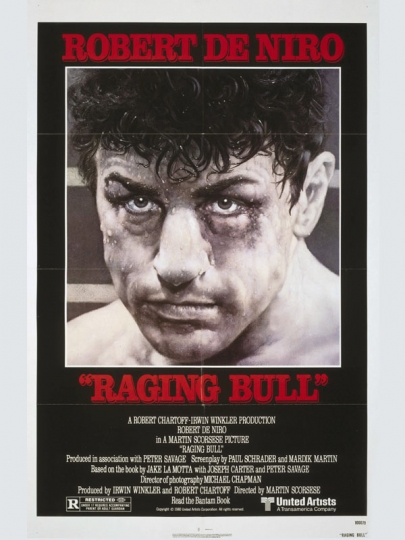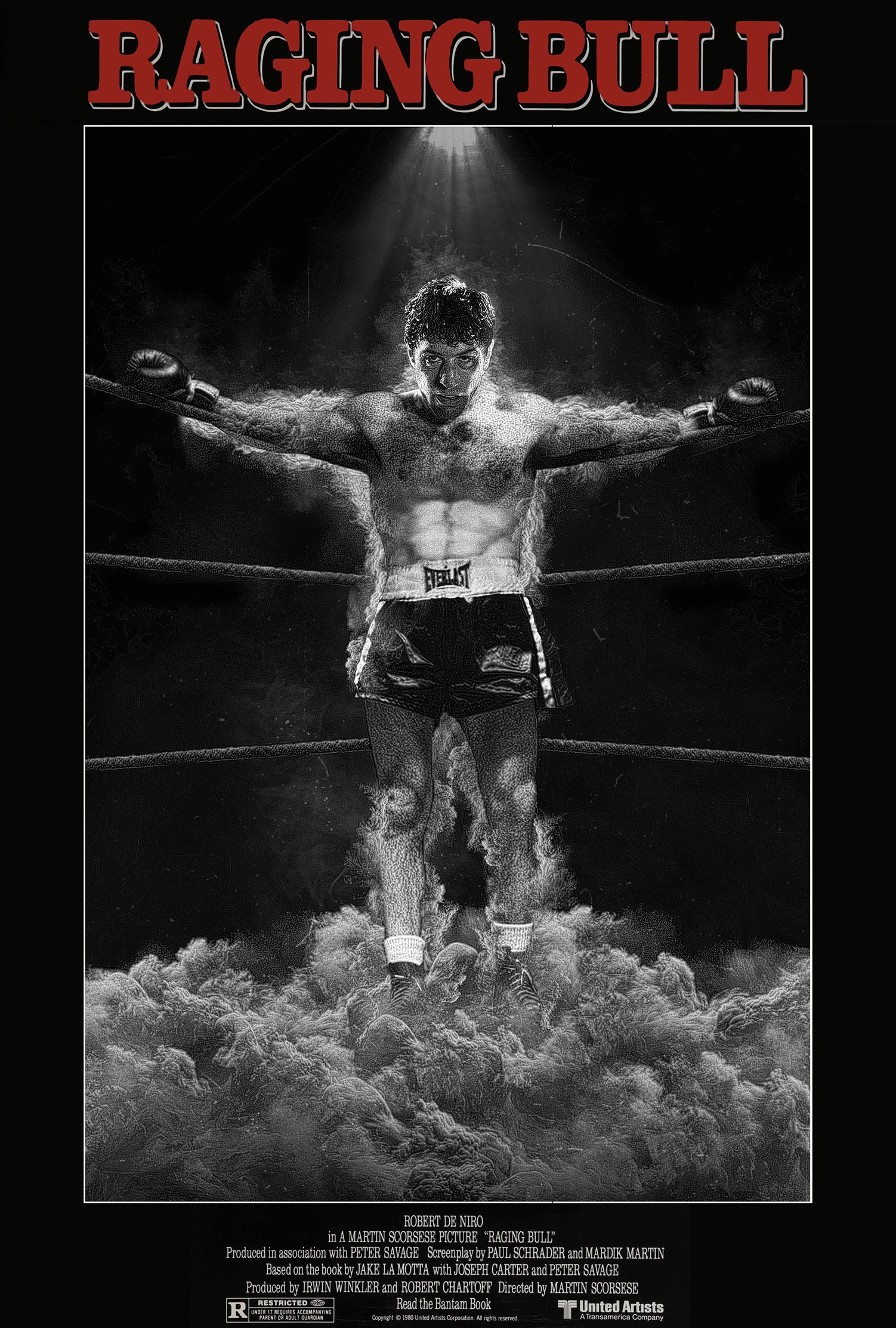



Michael Chapman’s black and white photography is marvelous in terms of composition and creates an outstanding visual effect. Technically, the film is stunning in the way it captures the various periods involved. Otherwise, the film is filled with interesting faces and performances that are perfectly tuned to Scorsese’s overall style. Joe Pesci is also excellent in his jaunty portrayal of La Motta’s manager brother, but Cathy Moriarty tends to be overly lethargic in her Kim Novak-like impersonation of La Motta’s second wife, Vickie. De Niro’s appearance is also astonishing in the final scenes, for which he put on 50 pounds during a two-month break in filming. Frank Westmore and Mike Maggi’s makeup for De Niro is incredible and makes the actor almost unrecognizable as himself he looks amazingly like La Motta. And seldom has an actor ever submerged himself so totally into a characterization. It took courage from both Scorsese and De Niro to concentrate so intently on such a negative character without making any attempt to soften his personality.

The undenied excitement of these sequences only emphasizes the amazing lack of energy in the rest of the film, though.īut there’s no denying the power and artistry of De Niro’s performance. These scenes are short, but they are extremely intense and tightly focused on the brutality of the sport, with blood spurting out of eyes and noses in stomach-turning detail (fortunately, the film is shot in black and white). Much of the film has an improvisational quality, which makes the story seem very real, but which is also rather dull.īy contrast, the fight sequences are highly stylized - to the point the filmmaker’s technique is overly obvious. Scorsese goes overboard in an attempt at low-keyed naturalism, however, and there is little dramatic structure to the biographical overview. From this opening, it flashes back to 1941 and his loss to Jimmy Reeves (Floyd Anderson), and then proceeds to scan events in La Motta’s life and his major fights. The film is framed with scenes of La Motta preparing for a concert reading in New York in 1964. There is only one brief moment in the film - when La Motta breaks down and cries after he has thrown a fight in order to get a chance at the championship - that the character is even the least bit sympathetic. It’s a downbeat study of a man whose only concern is winning the middleweight championship and whose unfounded jealousy and violent temper alienated everyone around him. 'Star Wars: Return of the Jedi': THR's 1983 Reviewīased on La Motta’s autobiography, which was written with Joseph Carter and Peter Aavage, the screenplay by Paul Schader and Maardik Martin makes no attempt to glamorize the fighter’s life.


 0 kommentar(er)
0 kommentar(er)
